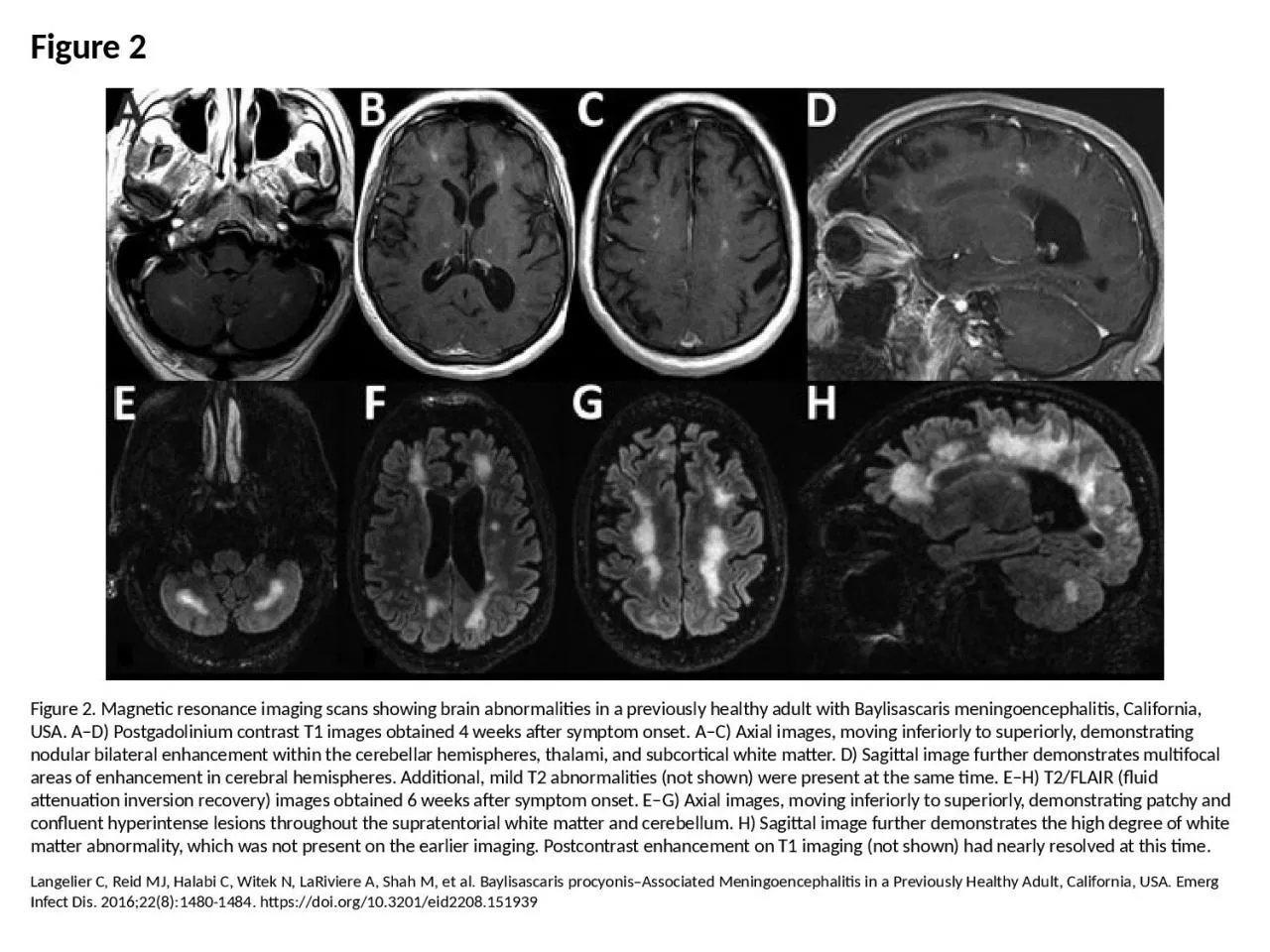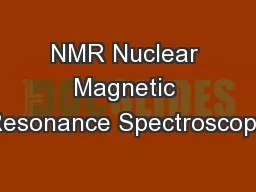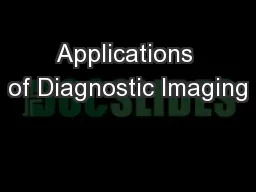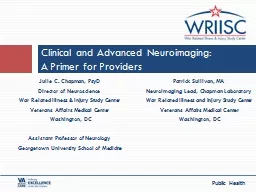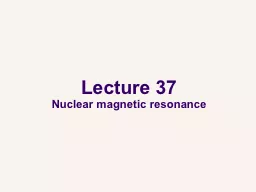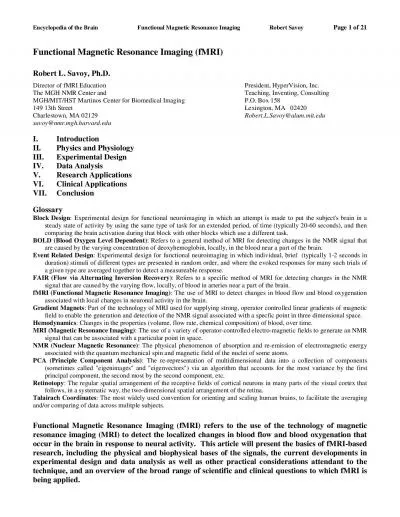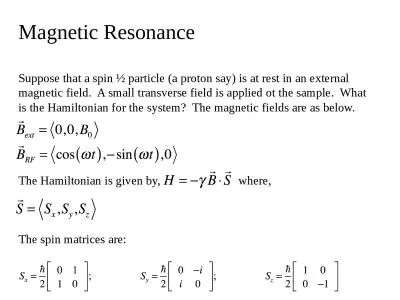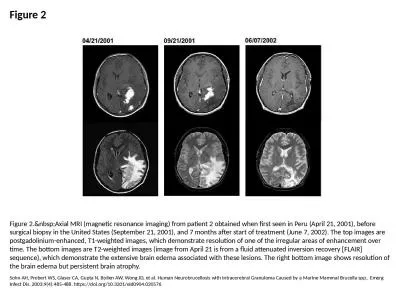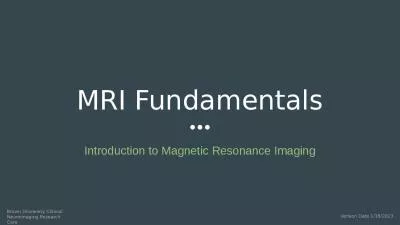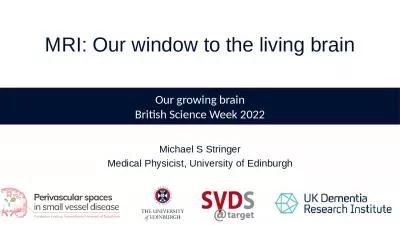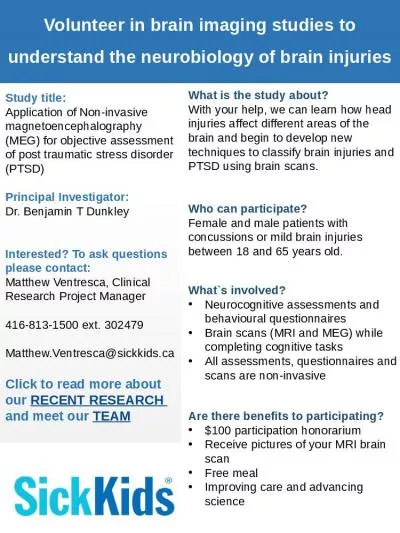PPT-Figure 2 Figure 2. Magnetic resonance imaging scans showing brain abnormalities in a previously
Author : lucy | Published Date : 2024-01-13
Langelier C Reid MJ Halabi C Witek N LaRiviere A Shah M et al Baylisascaris procyonisAssociated Meningoencephalitis in a Previously Healthy Adult California USA
Presentation Embed Code
Download Presentation
Download Presentation The PPT/PDF document "Figure 2 Figure 2. Magnetic resonance im..." is the property of its rightful owner. Permission is granted to download and print the materials on this website for personal, non-commercial use only, and to display it on your personal computer provided you do not modify the materials and that you retain all copyright notices contained in the materials. By downloading content from our website, you accept the terms of this agreement.
Figure 2 Figure 2. Magnetic resonance imaging scans showing brain abnormalities in a previously: Transcript
Download Rules Of Document
"Figure 2 Figure 2. Magnetic resonance imaging scans showing brain abnormalities in a previously"The content belongs to its owner. You may download and print it for personal use, without modification, and keep all copyright notices. By downloading, you agree to these terms.
Related Documents

